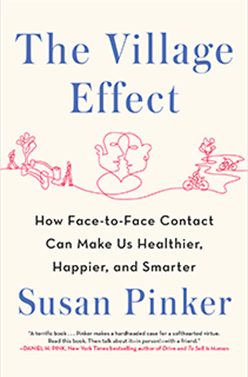The Village Effect
 There are many different approaches adopted by organisations to support people injured at work. These include consultant doctors, on-site Physiotherapy, free and confidential psychologists (EAP), ‘case-conferencing’ and specialized rehabilitation providers. All of which can be useful and helpful.
There are many different approaches adopted by organisations to support people injured at work. These include consultant doctors, on-site Physiotherapy, free and confidential psychologists (EAP), ‘case-conferencing’ and specialized rehabilitation providers. All of which can be useful and helpful.
Understandably, the typical approach to treating injuries and illnesses is to send people to specialists in the field related to their injury, and of course this makes sense and most people will recover and return to life and work.
For some people though recovery is delayed or prolonged, and some may experience ‘secondary illnesses’ such as anxiety and depression. The challenges of recovering from injury can be overwhelming. So what can we do when these traditional approaches don’t seem to be working and signs of anxiety or depression start to show?
If we are interested in exploring options outside of the traditional approaches, we could learn a thing or two from Susan Pinker who, in her book The Village Effect, explores “how face-to-face contact can make us healthier, happier and smarter”. Being with other people can enhance our well-being and support recovery from injury and illness.
Pinker dedicates Chapter 1 of her book to the topic “How Social Bonds Rejig the Outcome of Chronic Disease”. Sighting research that demonstrates how closer connection with others had a significant impact on recovery from cancer, Pinker notes;
“Unlike a placebo, which requires you to believe you are receiving medical attention, face-to-face social bonds bolster our immune responses by stealth. No needles pierce the skins. Nothing gets swallowed, inserted, or inhaled” (Pinker 2014, p. 21)
Pinker also recalls research involving 6928 people conducted in the seventies by Harvard epidemiologist Lisa Berkman that showed that women who were socially isolated had an elevated risk of dying of cancer.
“We know the connection between social involvement and robust physical and mental health is no fluke, and that the benefits of regular social contact are at least as powerful as regular exercise and health diet” (Pinker 2014, p. 25)
So could the same approach impact on recovery from injuries at work?
This reminded me of Jane who recently injured her shoulder at work. Jane saw a range of doctors and other treating health professionals and from their perspective, the shoulder was getting better and all seemed to be on track medically, but something was not quite right with Jane. Her husband told us that she wasn’t herself; she had become withdrawn and wasn’t participating in her usual activities. Her doctor said that she was experiencing anxiety.
Turns out that Jane was having a tough time at work. Jane’s workmates were becoming frustrated that she couldn’t do all of her work there was definitely some tension at work, both Jane and her teammates were often short with each other in their discussions. It ended with Jane being off work for around a month. Jane’s husband reported that during this period Jane would complain regularly about her shoulder pain, she continued to be withdrawn and her doctor also became more concerned.
As part of the ‘Return to Work’ planning process Jane requested to move to a nearby site. This was agreed to and arranged. On the day that Jane commenced work at the different location, she came across a number of people who she had not seen for some time. Jane came into contact with customers, including one who had recently had a baby, with suppliers and with teammates she hadn’t worked with for a while.
On meeting with these people Jane’s demeanour changed. She was soon more happy and sociable, and as her husband commented in a follow up discussion that Jane was much less withdrawn and more positive in conversation with him. She was talking a lot less about her shoulder pain, and was interacting with family and friends again. All this despite no extra or different medical treatment; it seemed that for Jane face-to-face contact helped her to become healthier and happier.
Are there situations you know of where face-to-face contact could be the best ‘medicine’?
What do you do to cultivate relationships and connection in your organisation? What cues and signs do you look out for to recognise isolation and loneliness in others?
How might we in risk and safety, go about creating ‘The Village Effect’ in our organisations?
We’d love to hear your thoughts, experiences and comments
Author: Robert Sams
Phone: 0424 037 112
Email: robert@dolphyn.com.au
Web: www.dolphyn.com.au
Facebook: Follow Dolphyn on Facebook



Do you have any thoughts? Please share them below